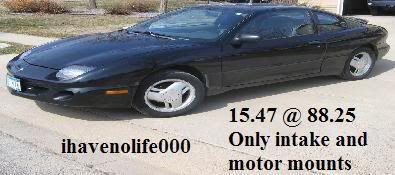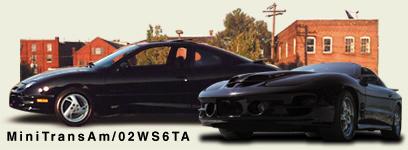although I'm very uneducated about fluid dynamics, this makes perfect sense.
(
NOTE: I copied this from another car forum that I'm on. the OP for this states that the author is unknown, or else I would have given them credit.)
Quote:
Ram air is an attempt to do the second. Under normal circumstances, the air at the throttle plate is at atmospheric pressure, and this pressure drops until the air reaches the cylinders. Ram air would start the process at some pressure higher than atmospheric, and even though the drop is the same, the cylinder pressure is higher because of the increase at the start.
Just how would this increase in pressure at the throttle plate occur? The oft-wrong “common sense” says, “If a scoop is placed in the airstream flowing around the vehicle, the velocity of the air ‘rams’ the air into the scoop, thus increasing the pressure.”
Why is this incorrect? There are two types of pressure: static and dynamic. Placing of one’s hand in front of a fan, or out of a moving car’s window, clearly exerts a force on the hand as the air diverts its path to flow around it. Most people would say “See? This is a clear indication that ram air works. Clearly there is pressure from the velocity of the air.” Well, this is correct, but only to a point. This is an example of dynamic pressure, or the force any moving fluid exerts upon obstacles in its path as the gas is diverted around the obstacle.
What an engine needs is static pressure. This is the pressure the same fluid exerts on any vessel containing it at rest. For those who were physics/chemistry geeks, it is the pressure caused by the force of the molecules bouncing off of the walls of the container. The key to understanding the difference between static and dynamic pressure lies in the velocity of the gas. Dynamic pressure is only a momentum effect due to the bulk motion of the fluid around an obstacle. Static pressure is an intrinsic property of a gas or fluid just because the molecules of the fluid are moving around. Any fluid which is moving can have BOTH dynamic and static pressure, but a fluid at rest only has static pressure.
The point of ram air would be to increase the static pressure, which would correspond to an increase in the in-cylinder air density, and of course, more air. Superchargers and turbochargers do what the mythical ram air purports to do. A supercharger trades the power of the belt and uses it to compress the air in the intake tract. This energy trade-off results in an increase in intake air pressure, more air in the cylinders, more fuel burned, and more power. A turbocharger trades the power of the hot gases and uses it to compress the air in the intake. The overall effect is the same – an increase in intake static pressure.
For ram air to work, it would have to trade the energy of the air’s velocity (as the vehicle moves through the air) for an increase in static pressure (since static pressure is a part of a gas’s internal energy, we see this is TRULY a trade in kinetic energy for an increase in internal energy). Now for the true reasons why ram air is a myth:
- The way for air velocity to be traded for an increase in static pressure is to actually SLOW IT DOWN in a nozzle of some sort. This is easily the MOST counterintuitive part of fluid mechanics for most people. The “common sense” mind says “In order to increase the pressure of the intake, the velocity of the air needs to be increased, just as increasing the speed of a fan exerts more force upon the hand.” Not only does this confuse dynamic with static pressure, but is also misses the point, which is to trade the kinetic energy of the gas for an increase in internal energy. How can this trade occur if the kinetic energy of the gas is increased? It cannot, and in fact, the only way to trade it is to use the velocity of the gas to compress itself – by slowing it down.
- Below about Mach 0.5 (or about half the speed of sound), air is considered “incompressible”. That is, even if the correct nozzle is selected, and the air is slowed down (the official term is “stagnated”) there will be zero trade. No kinetic energy will be traded in as work capable of compressing the air. The reasons for this are not discussed here; the reader may consult any reputable fluid mechanics textbook for confirmation of this fact. In plain English, a car is just too slow for ram air to work.
Still not enough evidence? Here is a little test. For ram air to work, the nozzle must be of a specific shape. The “Holley Scoop” for the Fiero is the wrong shape, by the way. The fact that it has no net shape at all immediately means it cannot effect any kind of energy trade off, so it cannot possibly create ram air. This is also true for the hood scoops on the Pontiac Firebird WS6 package as well, by the way.
What shape must it be? There are two kinds of nozzles. Pick one:
- Converging. This nozzle gets smaller as the air flows through it. It has a smaller exit than entrance. If the nozzle were a cone, the fat end is where the air would enter, and the narrow end is where it would exit.
- Diverging. This nozzle is opposite the other; it gets bigger as the air flows through it. With a larger exit than entrance, the narrow end of the cone is where the air would enter, and the fat end is where it would exit.
So, which is it?
Without hesitation, most of the “common sense” crowd will answer “Converging.” BZZZZT! Thank you for playing anyway! We have some lovely parting gifts for you! Bill, tell ‘em what they’ve won….
The answer is “divergent”. Yes, the nozzle would have to shaped so that the skinny end is pointed into the air stream, and the fat end connects to the throttle plate. How can this be right? Remember, to increase the static pressure of the intake air (which is the true “ram air” effect), the kinetic energy of the air must be traded to compress the air. This is done by slowing the air down, or stagnating it, and the only way to do this is with a diverging nozzle. Ah, but since air is incompressible at automobile speeds, it doesn’t matter any way.
Conclusion
Ram air is a myth because it does not exist, for the following reasons:
- Air is incompressible at any automobile speed., meaning that the kinetic energy of the air cannot be used to compress the air and raise the static pressure.
- The “ram air” nozzles commonly employed on automobiles tend to be the wrong shape. A divergent nozzle is required for ram air. Straight-profile scoops cannot provide a ram air effect.
Select one of the two types of intakes, warm air, or cold air. Beyond that its just about looks."
Desert Tuners
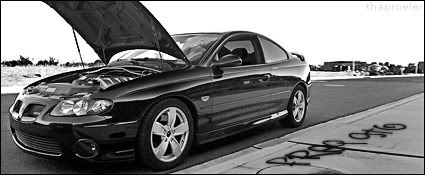
“When you come across a big kettle of crazy, it’s best not to stir it.”
Been saying that for awhile myself, hopefully that helps to clarify it for some of the thicker skulls around here...

Ouch, made my head hurt

NVVM if the WS-6 scoops dont technically work, they look badass anyways.
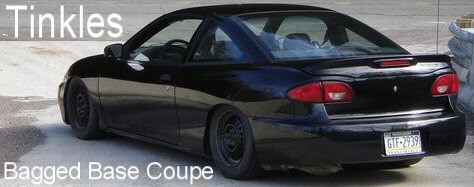
Nice read man.
PRND321 Till I DIE
Old Motor: 160whp & 152ft/lbs, 1/4 Mile 15.4 @88.2
M45 + LD9 + 4T40-E, GO GO GO
Thats odd cause on bikes they do work...at around 75-85mph you are getting roughly 2psi of boost
I skimmed a lot of it, but got the point. That's good info to know.
At the very least they look badass if done tastefully, and cool off the engine bay a bit.
Although I guess an invader type hood would work just as well.
 Fusion 9 Design // For all your web design needs!
Fusion 9 Design // For all your web design needs!
Philly D wrote:Thats odd cause on bikes they do work...at around 75-85mph you are getting roughly 2psi of boost
I call

need proof.
I agree that ram air is nothing more than a factory CAI, and usually looks nice to boot.

very good read indeed, but it is possible for a vehicle to experience a forced induction effect without actually having forced induction (N/A motor). for example, when tuning my car, there are point on the VE table that are over 100. the VE table is entered in percentage... if i hit (for example) 110% efficiency, it is basically 100% of the motors full ability with an extra 10% of the motors ability being crammed in there.
i think what was said above about the WS6 scoops is true in the aspect that the manufacturer isnt trying to "ram" more air into the motor and create a forced induced effect, but more or less trying to make more air available. it is a very short path cold air intake which should help in keeping air speed higher so there is less of a dynamic air speed loss. if a vehicle is designed and tuned to breath a certain way, it is very possible that a forced induced effect is achievable.
and, like in the example i gave with my car, a ram air hood is not always necessary to try and achieve this. my car only has a short ram intake. im sure if it was a cold air intake, my VE table may not be over 100% or atleast not as high over, but the trade off would be cooler air temps, which means denser air. so its basically a choice between 2 options, colder slower air, or warmer faster air... the ram air of the WS6 seems to try and achieve both by providing a fresh, cold air intake with a short path to try and deliver as much cold, dense air as fast as possible.

1997 Cavalier Z24 - 15.647 @ 88.02 MPH
Half the speed of sound is roughly 370mph (in case anyone was wondering).... So that means unless your motorcycle your talking about can go faster than that...... your full of it on the 2 psi thing.
I understood all of it.
This made me think of how jet engines are shaped....... they are actually designed the same way inside to compress the air flowing through them (with the help of turbines and impellers of course)...... thats one of the reasons a jet engine can produce more thrust at higher speeds..... it's the same science.... and for some reason... the only comparison I can thing of.
Notice the cones in the front of the engines below..... it's basically what he was talking about....... and SR-71 black bird uses the same "true ram air" science to create more power in it's engines.... it will give you a visual image of what he was talking about.
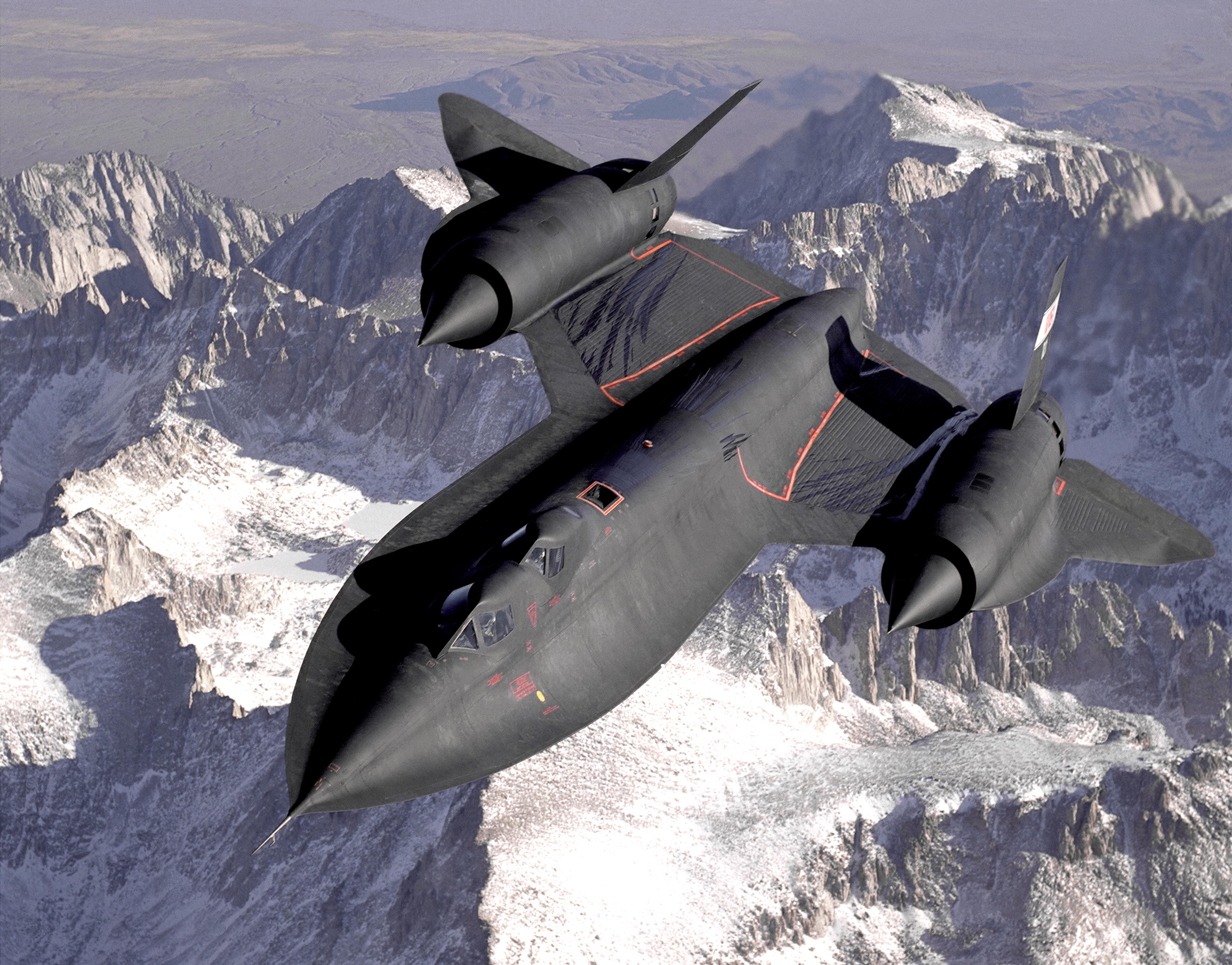

There is a reason you never see an intake like this on a car....... because they can't go fast enough to use them.
I've always said that all ram air on cars do is suplly the engine with a more fresh and cooler air supply and thats it (not more air) but people always argue with me....
Thats a great writeup.... it's just too bad that most people won't understand it.

Weebel wrote:I've always said that all ram air on cars do is suplly the engine with a more fresh and cooler air supply and thats it (not more air) but people always argue with me....
Thats a great writeup.... it's just too bad that most people won't understand it.
if the air is colder and more dense, can it not be more air? if you have in a jug lets say 1000 ml of air (easier to think of it like water) at 100*C and its at a certain density, and in another jug you have 500Ml of air at 50*C and a certain density, once they are brought to the same temperature and density could you not possibly have more air in the second jug if raising the temperatures and densities to the same level more than doubled the air of jug 2? it is theoretically possible, but im not sure of the co-efficients or values of how much air at certain temperatures or densities.

1997 Cavalier Z24 - 15.647 @ 88.02 MPH
^That is theoretically possible, assuming the containers are closed. Otherwise, the air 'created' by the temperature change would just escape out of the top of the container. This is why ram-air (essentially an open air "bottle") does not work without sufficient speeds. Yes, the ram-air setups would seem to tend to deliver cooler, denser air. The reason (as stated above) that this doesn't equal more air is because the speed is not great enough. Think of it as blowing into a large tube with a valve assembly on one end. You can blow cool, dense air into it, but unless there is enough velocity to actually compress the air, the excess will simply exit the tube out the opening to lower pressure areas. The air may be cooler and denser, but the volume of used air wouldn't increase unless it was compressed.
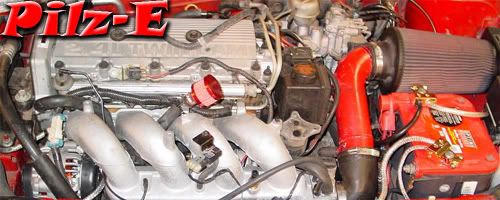
This is why I argued that designing a system should be so that a large amount of cool, dense air (Not compressed) would be gathered by a collector and funneled into a collection area so that the engine would have an abundance of cool dense air to draw upon immediately, along with a short overall length between the points of the collector and the collection so that changes in tract pressure signaled by the throttle opening would be more responsive, resulting in better throttle response.
What I find most amusing is Weebil's presentation of how the SR-71's engines use of doors and a retracting cone as to effect the amount of air inlet to the engine as power demand increases. Funny... this was the same thing auto engine designers did for years to switch between warm & cold air being drawn into the engine on carbureted engines and even TBI apps. The greatest example of it was GM's Cowl-Induction system, which drew upon the dynamics of how when a car is moving forward the faster it moves the greater amount of pressure of air in turbulence is built-up at the base of the windshield. By allowing the air to be drawn or entered into the engine more power can result. This idea is so old that it was used by NASCAR racers (Minus doors) well before the factory made one that used vacuum controlled doors, and it's still used by them today to great effect.
Go beyond the "bolt-on".
I will say that the expectations of ram air are what people argue more than anything.
I know that when I did a ram air on my wife's 2.5NA Dodge Daytona, it did make a positive difference in up and go.
Was it because a whole lot of air was rammed in or was it purely because it was making only outside air available which was a lot colder?
It could be a dash of both.
http://www.cardomain.com/ride/222191/2
I sold the car about a year ago as a bearing went out due to an incompetant shop who rebuilt the motor.
I saved the ram-air unit and sold it, and the new owner had me install it and we did a before and after.
He said "consider it sold my friend".
The unit looked like crap, but it worked so good.
I had to sell the gains to this guy as by just looking at the unit alone, it would not sell.
I do see that it was more as a CAI unit rather than a Ram Air unit.
The car did dyno at 136hp, and I do need to find the dyno sheet and scan it because I don't even believe it.
I was a surprised at the gains from the listed mods, and think the shop might have rigged the dyno as they do for the Civic owners so they can feel good about their mods.
I would have guessed that hp at the motor at best and not at the wheels.
On the 2001 Trans Am and the Grand Prix, they had the ram air edition.
I looked into what the gains were, and it was 5hp.
Whether or not that is accurate, it is what the factory lists it as.
Truthfully, where the ram air was (on the hood), it was not actually the air getting rammed in that made the gains.
It was the draw of cold air in my opinion.
They had an edition on American Muscle Car about Ram Air, and how it was more looks that performance.
There are gains, but they are small, and it really is more the direct stream of outside air than the force of the air.
2003 Sunfire with a 2 1/4 inch turbo muffler, 2 1/4 piping to a 2 1/2 inch resonator (bigger to make up for the baffling), a 2 1/4 inch catalytic converter, 2 1/4 inch down-pipe, a ported LSJ manifold, a drop in K&N filtercharger and sports a Bomber body kit with a VIS Invader hood.
As for switching from warm to cool air.... that was more for getting the car to warm up faster than anything. Most older cars you will see have it removed by the owner... but it was just a heat riser tube..... there would be this heat shield around the exhaust manifold funneled into a flex pipe that looked like a small cloths dryer vent hose that went to the air cleaner housing.... there was this little flap (or door) that would stay closed until the car warmed up (or the choke released) forcing it to draw air past the exhaust manifold warming it up..... then the door would open in the intake ducting closing off the riser tube and allowing fresh air to be drawn in the the regular larger ducting that drew cooler air from the outside if the car. In all honesty.... it was pretty much useless.
What nick is talking about where the air thats drawn in at the base of the hood at the bottom of the windshield is called cowl induction. You get air turbulence combined with lower air pressure in the area, and it helps route cooler air into the engine.... at least in theory... I honestly doubt that it does anything more than a CAI either... plus... it really doesn't make sense...because the air pressure would have to be higher outside the car than inside the car to create the vacuum effect they are talking about.... and I doubt it could creat a vacuum even relatively close to what the engine itself does
As for NASCAR still using cowl induction... it's because they have to... it's actually a requirement. The NASCAR officials believe that ram air actually works.... so they set a guideline stating that all cars must have there intake located out of the path of the oncoming airflow in order to level the playing field... it sounds stupid.... but it really is one of their rules. I know this from actually BS'ing with one of the pit crew members of a NASCAR team.
Whitegoose... regardless of what your map pressure sensor says... it's impossible to have positive air pressure (compressed), in the intake of a non boosted engine.... total lack of vacuum is as good as it can get.... either the map is reading wrong or being fooled somehow, or you are misinterpreting it.

I kinda feel the need to speak here on two things...
Weebil: Yes, you are correct. The purpose of such a system was to aid cold weather warm-up, as the whole purpose of the fuel metering/delivery system is to throughly mix the fuel with the incoming air to be ingested by the engine. Obviously in cold temperatures the fuel won't atomize (vaporize) very well & the engine will run over-rich and have drivability problems because of it. And since with every passing generation of models buyers expect the newer models to be better thatn the last, an automatic system needed to be devised. Hence the introduction of it. The controling part of the door in the snorkel was a vacuum motor that operated off manifold vacuum that was switched (blocked) by a thermo-vacuum switch mounted inside the air cleaner canister, that would allow the manifold vacuum to draw on the motor once it precieved that the air inside the canister was of sufficient temperature (warmth) to open the door. It typically didn't need much of a signal in terms of strength to operate the vacuum motor, so it worked well regardless of manifold vacuum drop it would stay open. IIRC.
Mike85220: If you look around here you'll find my posting of how I did the same thing with my '85 S-10 w/TBI 2.5L & 700R4. The only difference from what you did was I located the collection point (opening to the outside air in front) in the lower valence/chin spoiler (which was flat). The corogated fabric tubing I used was the same diameter inside as the O.D. of the air cleaner's snorkle. And it worked just the same. Did I get a marked or notable change in manifold pressure? I can't say as I had no way of monitoring it. But did it help the engine get cool, fresh outside air to work with? Something it so badly needed while cruising along at say 70-75mph? Yes! Did it help the engine overall? Yes, and helped me get 25mpg on average while giong so fast down to Bowling Green, KY for the Buick Nationals & ever since then 'til I sold the truck.
So is Ram-Air possible with a street car? After reading & considering all the evidence & information, I'd say no. But, it is possible to help the engine get all the cool outside air it wants to help it perform better... Even if it isn't under pressure. So does it pay to build a FAI (Fresh Air Intake) system? You bet your bippie it is!
Go beyond the "bolt-on".
Weebel wrote:Whitegoose... regardless of what your map pressure sensor says... it's impossible to have positive air pressure (compressed), in the intake of a non boosted engine.... total lack of vacuum is as good as it can get.... either the map is reading wrong or being fooled somehow, or you are misinterpreting it.
i never said it was the MAP sensor reading i was monitoring. when modifying the ECU with HPT, the volumetric efficiency tables can be changed. the VE tables in a nutshell is a table that tells the car how much fuel to mix in with the air being drawn into the cylinder to make big boom. there are point in my VE table that exceed 100%... granted they are very high on the rppm band, but they are there none the less.
http://en.wikipedia.org/wiki/Volumetric_efficiency
thats a decent read on VE.
Quote:
Volumetric efficiency in internal combustion engine design refers to the efficiency with which the engine can move the charge into and out of the cylinders. More correctly, volumetric efficiency is a ratio (or percentage) of what volume of fuel and air actually enters the cylinder during induction to the actual capacity of the cylinder under static conditions. Therefore, those engines that can create higher induction manifold pressures - above ambient - will have efficiencies greater than 100%.
Quote:
Volumetric efficiencies above 100% can be reached by using forced induction such as supercharging or turbocharging.
basically, forced induction, variable valve timing (VVT), and cam switching (v-tec) are basically ways to help improve the VE of the motor, hence why they say v-tec was designed to give the performance of a larger motor once vtec kicks in out of a physically smaller motor.

1997 Cavalier Z24 - 15.647 @ 88.02 MPH
whitegoose wrote:Weebel wrote:Whitegoose... regardless of what your map pressure sensor says... it's impossible to have positive air pressure (compressed), in the intake of a non boosted engine.... total lack of vacuum is as good as it can get.... either the map is reading wrong or being fooled somehow, or you are misinterpreting it.
i never said it was the MAP sensor reading i was monitoring. when modifying the ECU with HPT, the volumetric efficiency tables can be changed. the VE tables in a nutshell is a table that tells the car how much fuel to mix in with the air being drawn into the cylinder to make big boom. there are point in my VE table that exceed 100%... granted they are very high on the rppm band, but they are there none the less.
http://en.wikipedia.org/wiki/Volumetric_efficiency
thats a decent read on VE.
Quote:
Volumetric efficiency in internal combustion engine design refers to the efficiency with which the engine can move the charge into and out of the cylinders. More correctly, volumetric efficiency is a ratio (or percentage) of what volume of fuel and air actually enters the cylinder during induction to the actual capacity of the cylinder under static conditions. Therefore, those engines that can create higher induction manifold pressures - above ambient - will have efficiencies greater than 100%.
Quote:
Volumetric efficiencies above 100% can be reached by using forced induction such as supercharging or turbocharging.
basically, forced induction, variable valve timing (VVT), and cam switching (v-tec) are basically ways to help improve the VE of the motor, hence why they say v-tec was designed to give the performance of a larger motor once vtec kicks in out of a physically smaller motor.
To be technical, V-TEC doesn't simulate a larger engine, nor in many cases will it astronomically increase VE. What it does is simulate a "Race Engine" of the same displacement, which is why they have such little torque compared to their horsepower output. It provides 2 VE peaks, one for the low set of cams and another for the "Race" lobe, providing as flat of a torque curve as they possibly can. Belt and turbo-supercharging does, howvever, simulate a larger engine better because the engine injests similar amounts of air at a given RPM as a larger displacement NA engine, but it too is not perfect, because the efficiency of the compressor changes depending on the CFM's and the compressor is never 100% efficient.
i guess i should have been more clear on that. it has been said that the design is supposed to simulate a larger engine. of course it cant, but that is how alot of people refer to it. you are correct in your explanation that there are 2 peaks to try and keep the curve as flat as possible so, more or less, the engine never stop accelerating positively (not to be confused with engine speed, 2 different things). when the engine stop accelerating in a positive manor the curve will drop off.

1997 Cavalier Z24 - 15.647 @ 88.02 MPH
I had a 2000 Chevy Prizm LSi that had VVTi, isn't variable valve timing with intelligence just V-tec? Or is it something else?
I will say, it did make that 1.8 a little more balanced. It had the same pep from the low end to high. Not fast, just peppy.
2003 Sunfire with a 2 1/4 inch turbo muffler, 2 1/4 piping to a 2 1/2 inch resonator (bigger to make up for the baffling), a 2 1/4 inch catalytic converter, 2 1/4 inch down-pipe, a ported LSJ manifold, a drop in K&N filtercharger and sports a Bomber body kit with a VIS Invader hood.
VVT and V-tec are different systems.
VVT and VVT-i adjust the advnace/retard of the cam or cams to make corrections to the placement of the power band.
v-tec and what nissan used to have in there neo-VVL are actually a cam switch. rather than adjusting or retarding the cam(s), they will switch the lobes that are acting on the vlaves from a "mild" to "wild" lobe. so basically, its 2 cams in one.

1997 Cavalier Z24 - 15.647 @ 88.02 MPH



